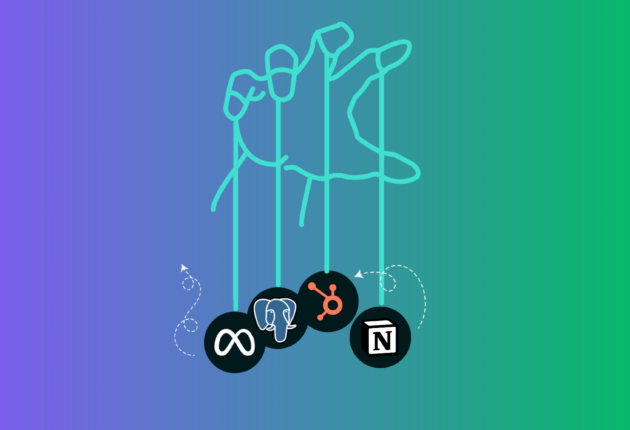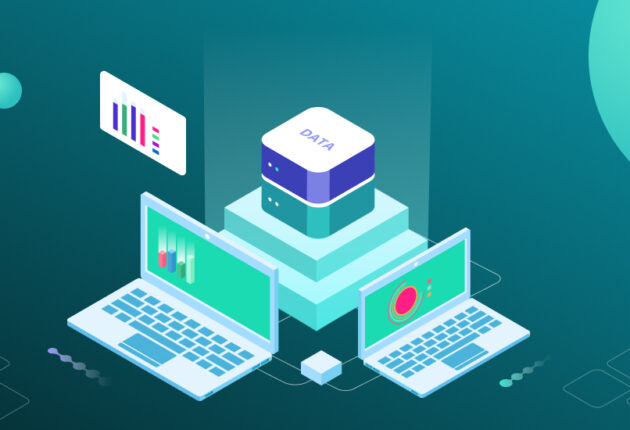Building a modern data infrastructure is not just a technological necessity but a strategic imperative for organizations that want to unlock new opportunities, drive innovation, and gain a competitive edge. This blog post explores the importance of building a data infrastructure for businesses. It also analyzes the critical role that data infrastructures play in ensuring data privacy, protection, and access management. Finally, we provide essential tips and best practices for designing and implementing a cloud data infrastructure that aligns with an organization’s needs and goals.
In this article:
- What is data infrastructure, and why is it important for your business?
- Building a modern data infrastructure
- What are the benefits of building a data infrastructure?
- What are the key components of a data infrastructure?
- Essential tips and best practices
- Examples of data processing tools used in data infrastructure
- Conclusions
What is data infrastructure, and why is it important for your business?
Data infrastructure refers to the underlying systems, technologies, and processes that enable data collection, storage, processing, and analysis. It encompasses a wide range of components, including databases, data warehouses, data lakes, data pipelines, data integration tools, and the hardware and software infrastructure that supports them.
A well-designed data infrastructure is crucial for businesses for several reasons:
- Data privacy and protection: businesses must ensure that their data infrastructure adheres to strict privacy regulations and data protection standards. A robust data infrastructure can help organizations implement effective access controls, encryption, and other security measures to safeguard sensitive data.
- Data access and management: a modern data infrastructure enables organizations to manage and access their data efficiently, providing a single source of truth for decision-making. It facilitates data integration, quality management, and governance, ensuring data are accurate, consistent, and accessible to authorized users.
- Scalability and flexibility: as businesses grow and their data needs evolve, a scalable and flexible data infrastructure is essential. This will allow organizations to adapt to changing requirements, accommodate increasing data volumes, and integrate new data sources seamlessly.
- Competitive advantage: by leveraging a robust data infrastructure, businesses can gain valuable insights from their data, enabling them to make informed decisions, optimize operations, and identify new opportunities for growth and innovation.
Building a modern data infrastructure
Now that we understand what composes a data infrastructure, let’s consider how to build one. The first step is assessing your data needs. This includes identifying the types of data you collect, the volume and velocity, and the specific use cases and requirements for data analysis and reporting. Understanding your data needs will help you determine the appropriate architecture, technologies, and resources required for your data infrastructure.
Once you have a clear understanding of your data needs, the second step is choosing the appropriate architecture. This may involve a combination of on-premises and cloud-based solutions, depending on your requirements for security, scalability, and cost-effectiveness.
Popular architectures for modern data infrastructure include:
- Data lakes: a centralized repository that allows you to store and analyze vast amounts of structured and unstructured data in its raw format.
- Data warehouses: a centralized repository for structured, historical data that is optimized for analytics and reporting.
- Hybrid architectures: a combination of on-premises and cloud-based solutions, allowing you to leverage the benefits of both environments.
The main difference between data lakes and data warehouses is that data warehouses are designed for structured data analysis and reporting, while data lakes serve as centralized repositories for storing raw, diverse data for advanced analytics, machine learning, and data science use cases.1
After choosing the architecture, the next step is ensuring data privacy, protection, and access management. This involves implementing robust data governance policies and security measures (please also see our article “What is Data Access Governance, and Why is it so Important?”) such as:
- Access controls: defining and enforcing granular access controls to ensure that only authorized users can access sensitive data.
- Data encryption: encrypting data at rest and in transit to protect against unauthorized access and data breaches.
- Data masking and anonymization: obfuscating or removing personally identifiable information (PII) to protect individual privacy and comply with data protection regulations.
- Differential privacy: applying techniques that introduce controlled noise or randomization to data, allowing for statistical analysis while preserving individual privacy.
Finally, a well-designed data infrastructure should provide seamless access to data for authorized users and enable efficient data management (see also our article “Effective Data Access Management: Risks, Technology, and Strategies”). This can be achieved through:
- Data cataloging: maintaining a centralized catalog of data assets, metadata, and lineage to facilitate discovery and understanding.
- Data integration: implementing tools and processes to integrate data from various sources, ensuring consistency and quality.
- Self-service analytics: empowering business users with self-service analytics tools and dashboards for data exploration and reporting.
What are the benefits of building a data infrastructure for a business?
Building a robust data infrastructure allows businesses to make data-driven decisions, ensure data security and compliance, foster innovation, and gain a competitive edge through efficient data management and analysis. In particular, building a robust data infrastructure offers the following key benefits:
- Improves decision-making: a solid data infrastructure enables organizations to collect, analyze, and interpret high-quality data, leading to better-informed business decisions.2
- Increases efficiency: standardized and streamlined processes for data storage, retrieval, and analysis can lead to significant time and cost savings, resulting in increased overall operational efficiency.3
- Enhances data governance: a robust data infrastructure promotes better data management and governance, improving data quality, integrity, and reliability.4
- Provides greater security: strong data infrastructure often includes comprehensive security measures that protect sensitive data from breaches, ensuring data privacy and regulatory compliance.5
- Scalability: a solid data infrastructure can easily accommodate business growth, allowing for easy scalability when data volumes increase.6
- Regulatory compliance: a reliable data infrastructure helps ensure that a business adheres to industry regulations and standards by managing and protecting data according to legal requirements.
Data Peace Of Mind
PVML provides a secure foundation that allows you to push the boundaries.

What are the key components of a data infrastructure?
At its core, a data infrastructure comprises various components that work together to support the entire data lifecycle, from collection and storage to processing, analysis, and insight generation.
Firstly, data storage and databases are the foundation of any data infrastructure. These systems, including traditional databases, data warehouses, data lakes, distributed file systems, and cloud storage solutions, provide the means to store and manage data. Choosing the right storage options based on data volume, variety, and requirements is crucial for ensuring efficient data management.7
Secondly, data processing tools, such as Apache Hadoop, Apache Spark, and data integration/ETL (extract, transform, load) tools, are vital in enabling large-scale data processing. These tools facilitate data ingestion, transformation, and integration from various sources, ensuring data is prepared for analysis and decision-making.8
Once the data is processed, data analysis and business intelligence tools, such as Tableau, Power BI, and other analytics platforms, come into play. These tools provide data visualization, advanced analytics, and reporting capabilities, allowing organizations to derive insights and make data-driven decisions from the processed data.9
Furthermore, a robust network infrastructure comprising telecommunication networks (LAN, WAN, Internet), protocols, routers, and connectivity components is essential for enabling secure and efficient data transfer between systems, servers, and storage devices. This ensures that data can flow seamlessly throughout the infrastructure.10
Security infrastructure, including firewalls, encryption software, access controls, and data governance policies, is another critical component. These measures protect data from unauthorized access and breaches and ensure compliance with regulations, safeguarding the organization’s valuable data assets.11
Additionally, the physical infrastructure, consisting of hardware components like servers, computers, storage devices, and data centers, provides the foundation for data storage and processing. Many organizations also adopt cloud infrastructure solutions, which offer scalable and flexible data storage, processing, and analysis capabilities.12
Finally, data governance and architecture encompass the policies, processes, and architectural designs that govern data management, quality, and privacy and ensure alignment with business objectives. This component ensures that the data infrastructure operates in a controlled and organized manner, supporting the organization’s overall data strategy.13
Essential tips and best practices
When building a data infrastructure, it is essential to follow best practices to ensure its effectiveness, scalability, and long-term success. First, a data infrastructure should be designed with scalability and flexibility in mind. It should be able to accommodate increasing data volumes, integrate new data sources, and adapt to changing business requirements without significant disruptions or costly overhauls.
Second, ensuring seamless data integration and interoperability across different systems and platforms is crucial for a successful data infrastructure. Adopt industry standards and open data formats to facilitate data exchange and avoid vendor lock-in.
Third, a data infrastructure is not a one-time implementation; it requires continuous monitoring, maintenance, and optimization. Establish processes for regular performance monitoring, system updates, and capacity planning to ensure optimal performance and reliability.
Finally, when building your data infrastructure, it’s essential to consider relevant compliance and regulatory requirements, such as the General Data Protection Regulation (GDPR), the California Consumer Privacy Act (CCPA), or industry-specific regulations. Ensure your data infrastructure adheres to these regulations and incorporates appropriate controls and safeguards.
Examples of data processing tools used in data infrastructure
Within a robust data infrastructure, a variety of data processing tools play crucial roles in enabling efficient data management, integration, and analysis. One key category is ETL/ELT tools, such as Rivery, Hevo, Talend, Informatica, AWS Glue, and Azure Data Factory, which are used for extracting data from various sources, transforming it into the desired format, and loading it into data warehouses or data lakes.14
Complementing these tools are data integration tools like Apache Kafka, Apache NiFi, and Mulesoft, which help integrate data from different sources into a unified data pipeline or data lake. This integration process ensures that data from disparate systems can be consolidated and made available for further processing and analysis.15
Once the data is integrated, data cleaning and transformation tools come into play. Programming languages and libraries like Python (with libraries like Pandas) and R are commonly used for cleaning, transforming, and reshaping data, ensuring that it is in a suitable format for analysis and decision-making.16
For organizations dealing with large volumes of data, big data processing frameworks such as Apache Hadoop and Apache Spark are essential. These frameworks enable distributed processing and analysis of large datasets across clusters of computers, providing the scalability and performance required for handling massive amounts of data.17
Databases and data warehouses, including SQL databases (MySQL, PostgreSQL), NoSQL databases (MongoDB, Cassandra), and data warehouses (Amazon Redshift, Snowflake), serve as the storage and management systems for structured and unstructured data.18
Once the data is processed and stored, data visualization and business intelligence (BI) tools like Tableau, Power BI, and QlikView come into play. These tools are used for data analysis, visualization, and reporting, enabling organizations to derive insights and make data-driven decisions from the processed data.19
In addition to these core processing tools, data governance tools like Collibra, Alation, and IBM Watson Knowledge Catalog help organizations manage data quality, metadata, and data governance policies, ensuring that data is managed and utilized in a consistent and compliant manner.20
Finally, data security tools such as Symantec, McAfee, and Avast are essential for securing data infrastructure components, protecting data from breaches and unauthorized access and safeguarding the organization’s valuable data assets.21
The choice of data processing tools depends on the specific requirements of an organization, such as the volume and variety of data, the need for real-time or batch processing, and the existing technology stack. Many organizations use a combination of these tools to build a robust and scalable data infrastructure tailored to their unique needs and requirements.
Conclusions
Building a robust and modern data infrastructure is no longer an option but a necessity for businesses. As technology continues to evolve, the future of data infrastructure will be shaped by emerging trends and innovations, such as the adoption of cloud-native architectures, leveraging containerization, microservices, and serverless computing, enabling greater scalability, flexibility, and cost-efficiency. Additionally, integrating Artificial Intelligence (AI) and Machine Learning (ML) capabilities into data infrastructure will enable advanced analytics, automated decision-making, and predictive modeling, unlocking new insights and opportunities. With the proliferation of Internet of Things (IoT) devices and edge computing, data infrastructure will need to accommodate and process data at the edge, closer to the source, enabling real-time analytics and decision-making. Furthermore, concepts like data fabric and data mesh will gain traction, promoting decentralized data management and enabling organizations to treat data as a product, fostering greater agility and scalability.
In this blog, we have introduced a possible and feasible way to implement a well-designed data infrastructure and help organizations unlock the true value of their data assets, ensuring data privacy, protection, and access management while enabling informed decision-making, operational efficiency, and competitive advantage. However, building a data infrastructure is an ongoing journey that requires careful planning, strategic decision-making, and a commitment to following best practices. By embracing scalability, flexibility, data integration, and continuous monitoring and maintenance, businesses can future-proof their data infrastructure and position themselves for long-term success.
2 Ananth Packkildurai, “An engineering guide to data creation,” Schemata Labs, https://blog.schematalabs.com/an-engineering-guide-to-data-creation-a-data-contract-perspective-e9a7a6e04356?gi=029647d93674
3 See Note 2
4 See Note 2
5 See Note 2
6 Cole Lehman, “Data Infrastructure 101,” 5 July 2022, Shipyard, https://www.shipyardapp.com/blog/data-infrastructure/
7 See Note 2
8 Secoda, “ What is data infrastructure,” 22 January 2024, https://www.secoda.co/glossary/what-is-data-infrastructure
9 Institute of Data, “The ultimate guide to big data infrastructure,” 11 March 2024, https://www.institutedata.com/blog/the-ultimate-guide-to-big-data-infrastructure/
10 Alooba, “Data Infrastructure,” https://www.alooba.com/skills/concepts/data-management/data-infrastructure/
11 See note 10
12 See Note 8
13 See Note 2
14 Chen Cuello, “A beginner’s guide to data processing tools,” 19 June 2023, Rivery, https://rivery.io/data-learning-center/data-processing-guide/
15 See Note 14
16 See Note 14
17 See Note 9
18 See Note 2
19 See Note 9
20 See Note 14
21 See Note 14










